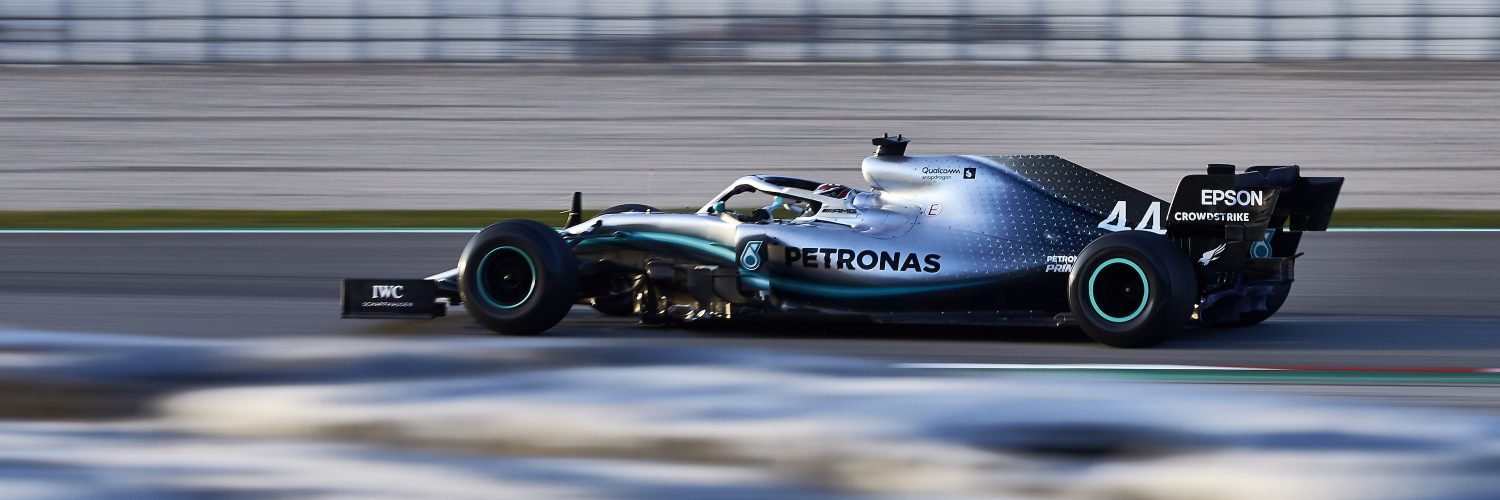It has been my motto of the week on Motorsport Tech that it’s foolish to read too much into lap times in the first pre-season test. I’m certainly sticking to that.
Renault’s Nico Hulkenberg was fastest of all as the chequered flag dropped and teams began the long process of evaluating all the valuable data collected over the course of the week, the German’s 1m17.393s effort set on the softest and grippiest compound, now known as the C5.
There are worse places to be… #RSspirit pic.twitter.com/tWi9T3YaxU
— Renault F1 Team (@RenaultF1Team) February 21, 2019
After Daniil Kvyat’s quickest mark of yesterday, new Toro Rosso recruit Alexander Albon was only 0.3s adrift on the C5 but having completed a massive 136 laps, and that time set before lunch when track temperatures were lower.
Daniel Ricciardo and Valtteri Bottas were next, also on the C5 and also set before the lunch break. The drivers that made most fans stand up and take notice were Charles Leclerc and Lewis Hamilton.
The reigning world champion was fifth quickest but ran for a relatively conservative, in the scheme of testing, 58 laps. His 1m17.977s lap time put him just 0.069s up on new French Scuderia recruit, already widely tipped to do big things in 2019. Leclerc, however, was on the harder C3 compound and was the filling to a British Hamilton and Lando Norris sandwich, the McLaren new boy seventh quickest after 132 laps on the C4.
There was one particularly hairy moment for Hamilton early in the session, the Mercedes man forced to run wide to avoid collecting the Williams of Robert Kubica, although blame is hard to apportion in this instance with the latter on a data gathering aero test, slowed significantly by his aero rakes.
😯 😧 🙈#F1 #F1Testing @R_Kubica @LewisHamilton pic.twitter.com/UwFWgiNoak
— Formula 1 (@F1) February 21, 2019
A fresh angle of the Hamilton-Kubica near miss from Thursday morning 👀#F1 #F1Testing pic.twitter.com/ClmThFPyYn
— Formula 1 (@F1) February 21, 2019
So, what can we really read into all of these final lap times? Put simply, the fastest times do not equate to the fastest car. Tyres compounds can provide a half decent guide, but before early conclusions are made, it is worth pointing out that nobody outside the teams they work for knows exactly what fuel loads cars are running. And weight makes one heck of a difference.
"They are probably not pushing, and we are not either"@Charles_Leclerc says it's important not to get carried away, despite a stellar first week of #F1Testing for his @ScuderiaFerrari team 👌https://t.co/Uxdjb1Ysc2
— Formula 1 (@F1) February 21, 2019
The number of completed lap run can also give fans something of a clue. Longer runs can mean heavier loads and race distance simulations, the same being said of shorter stints focused at pure out-and-out performance. Indeed, Red Bull openly admitted that the primary focus was on longer stints with a higher fuel load, still putting that Honda power unit through its paces in terms of reliability testing. Pierre Gasly’s 146 revolutions of the Circuit de Barcelona-Catalunya was the most of any team, eight more than Leclerc managed.
And here’s what the overall times look like after four days of #F1testing @Circuitcat_eng #Fit4F1 pic.twitter.com/XYYOhoJBfZ
— Pirelli Motorsport (@pirellisport) February 21, 2019
With another four days of running in Barcelona from February 19-22, it was encouraging that Acronis partner teams Williams enjoyed a productive day, Robert Kubica completing a valuable 48 laps in the morning before George Russell took over duties in the afternoon to add time to his efforts on Wednesday.
Like Williams, Racing Point was the only other team to experiment with the second hardest C2 compound, Lance Stroll completing 72 laps in his dashing RP19.
Team work – Lance with his race engineer, Brad Joyce. #F1Testing pic.twitter.com/B2GIUs119k
— SportPesa Racing Point F1 Team (@RacingPointF1) February 21, 2019
“Today was another valuable day of testing,” confirmed Tom McCullogh, Performance Engineering Director. “We focused mostly on set-up work and understanding how our car works, having completed the majority of our data gathering tests over the last three days. We were also able to start working on our long runs.
“We are making good progress with the balance, but unfortunately the day was cut short by an oil leak we spotted in the data, something we are currently investigating. Overall, this week has been a productive one even though we didn’t complete all the mileage we wanted. Nonetheless, we have some important data and we are looking forward to another productive test next week.”
WEEK ONE = DONE ✅
The Renault pair are split at the top of the timesheets by @alex_albon 💪
1⃣1⃣4⃣6⃣ laps completed on Day 4 – that's more than 17 race distances!#F1 #F1Testing pic.twitter.com/WK9wFg49Yd
— Formula 1 (@F1) February 21, 2019
Top image: 2019 Barcelona Pre-Season Test 1. © Steve Etherington.



